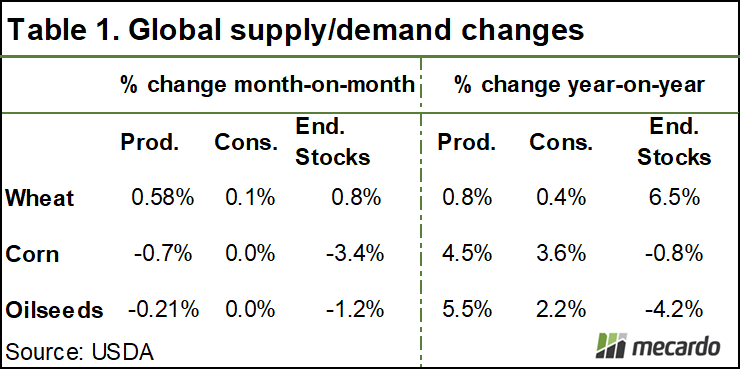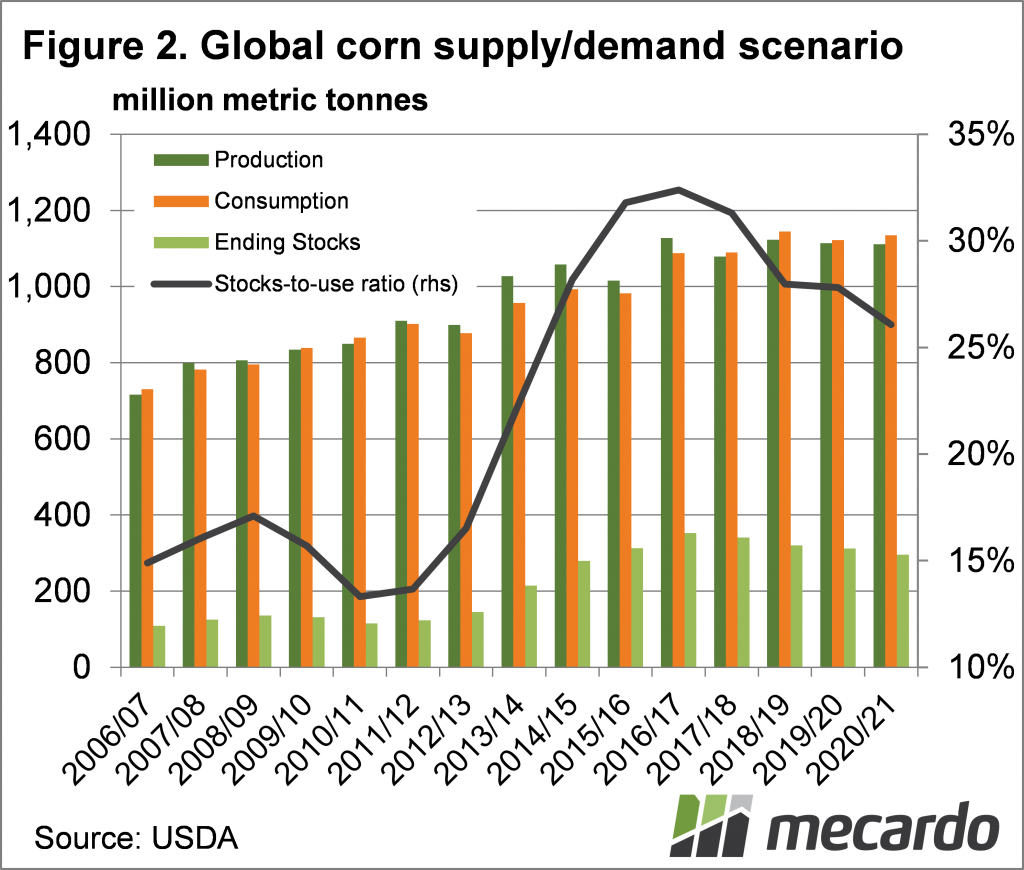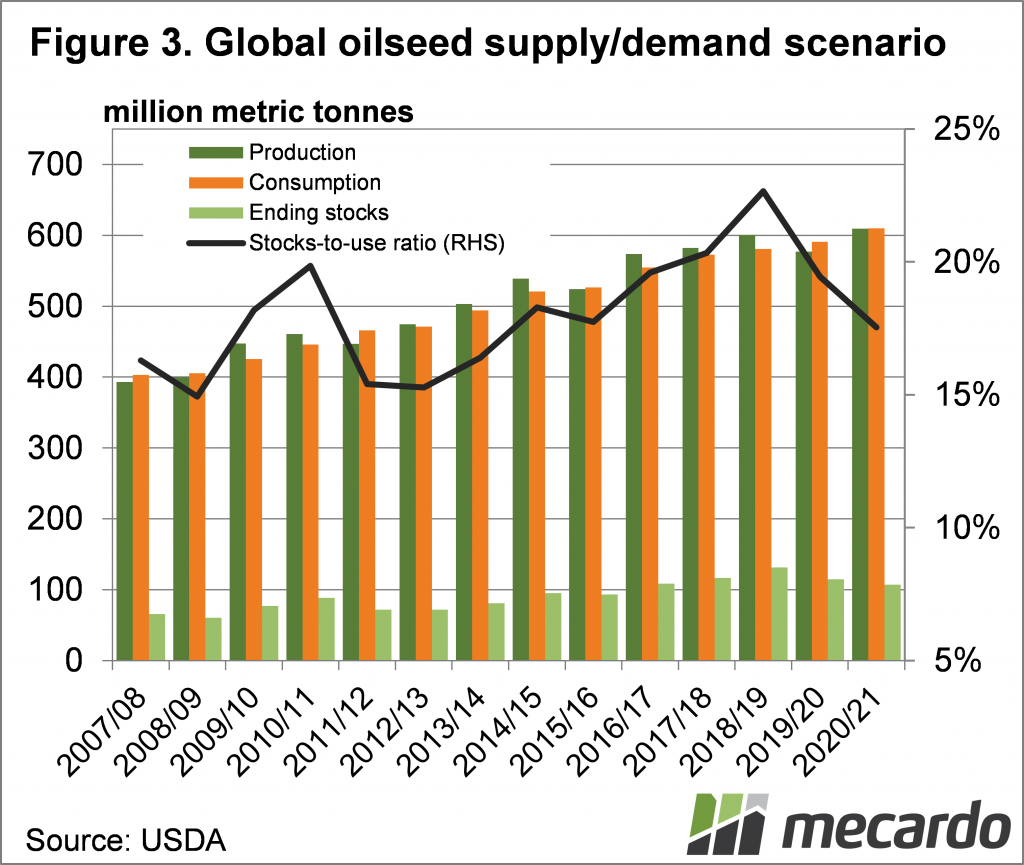The September World Agricultural Supply and Demand Estimates (WASDE) from the United States Department of Agriculture (USDA) was much anticipated. There was plenty of conjecture as to how the USDA would alter corn estimates, given recent weather issues with the crop, with forecasts coming in around pre-report estimates.
Global grain markets keep a close eye on the US corn crop at this time of year. Weather issues have the potential to knock yields and harvested areas around. Given the enormous size of the US corn crop relative to most other exporting countries, what happens in US corn impacts global grain markets in general.
The last month has seen storms in Iowa, and drought in other areas. Early freezes have also been reported, which can impact yields. Pre-report estimates were expecting the USDA to strip nearly 10mmt off the US corn crop, and they weren’t disappointed. The US corn crop forecast fell 2.5%, or 9.6mmt, to 387,47mmt.
Regular readers will remember the US corn had 25mmt stripped off the estimate back in July, so what was a mega crop, will now merely be big. The forecast for US corn is still for a four year high, and a 9% increase on last year.
On a global scale, the fall in the US, along with declines in the EU and Ukraine, were responsible for a 0.74% decline in global production (Figure 1) and a 3.36% fall in ending stocks. Figure 2 shows global corn stocks-to-use, a measure of supply versus demand, has fallen to 26%, an 8-year low.
The WASDE report was relatively benign for wheat, with the current large global crop, and rising stock levels largely confirmed.
The oilseed chart in figure 3 shows why canola pricing remains relatively strong. A 2.3% decline in US soybean production contributed to further declines in world soybean stocks and pushed stocks-to-use to a five-year low.
What does it mean?
Despite being close to pre-report estimates, the cut in US corn production has given CME Corn Futures a small boost, with pricing hitting a six-month high. In our terms, corn is still only at $198/t, but this means that it will be hard for our Feed Barley to fall below $200/t during the coming harvest.
US wheat prices eased with the WASDE but remain near the top of the six-month range. US Soybean Futures had the strongest reaction, gaining 2% to break through the 1000¢/bu mark, and the $500/t mark in our terms. This is good news for canola, which could see some further upside this week.
Have any questions or comments?
Key Points
- The September WASDE released Friday shows a heavy decline in US corn production.
- The report kept wheat steady but saw further falls in global oilseeds.
- Soybeans and corn rallies are positive for feed grain and canola prices for the coming harvest.
Click on figure to expand
Click on figure to expand
Click on figure to expand
Data sources: USDA, Mecardo














